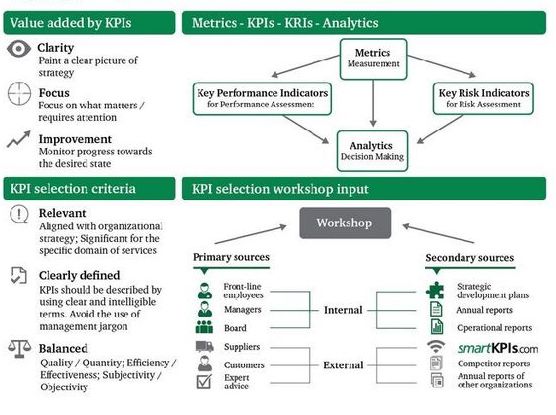What are KPIs and why do I need them?
Key Performance Indicators (KPIs) are the scoreboard for your business. They’ll tell you where you are winning and where you need to improve. Imagine going to a basketball game where there was no scoreboard. Just two teams playing basketball. You’d be outraged and demand the score be displayed. Yet, like many other business owners, you run your business, your livelihood, your retirement strategy, without a scoreboard.
Why are KPIs Used
As a Business Owner, you sometimes feel overwhelmed and distracted with all of the daily activities and tasks. Yet you must make important decisions, quickly, with great consequences, and often with limited information on hand. Without the right KPIs to guide you, you tend to focus too much on the tactical daily issues and neglect the strategic decisions that have critical impact on your success. You can’t manage or grow what you don’t measure.
What KPIs Should be Used For
KPIs will communicate and inform – your team, suppliers, and customers, about the business situation. They act as a diagnostic to tell you the health of your business in many different areas. They are a source of learning – which marketing, which programs are working or not working. And they guide your decisions and help you define what action to take next.
What they should NOT be used for is controlling. It’s tempting to try to control employees and others using KPIs. I’m not saying don’t use them with employees, but use the right ones, and use them for continual learning and improvement, not to control how many times a day they use the restroom.
How To Implement KPI’s
Step 1: Define your strategy
- Strategy reflects the company Vision, Mission and Values – do you have yours well-defined?
- Set goals
- What are your most important business objectives?
- What “drivers” are critical to success?
- What impacts driver results?
- Which can align team members on strategic issues?
- Which can identify barriers to growth?
Step 2: Audit Existing Measures
- Assess strategic fit of your existing KPIs
- Identify what data is available
- Review measurement processes
- Review Accuracy
- Review Timeliness
- Identify gaps
Step 3: Develop New Measures
- Bridge the gaps identified in Step 2
- Measures must reflect performance and progress of business
- They are quantifiable
- They are actionable
- They are comparable with another number
- Last year
- Budget
- Goal
- Trend
What are the trends? Look at your KPIs over time to see more deeply what they’re trying to tell you. A measurement by itself with no comparison is not as revealing.
Step 4: Analyze and Report
- Make it easy to read
- Create a one page summary
- Include visuals & graphs
Step 5: Continuous Improvements
- Set priorities based on strategy
- Ensure your goals are SMART
- Assign accountability!
- Track improvement
- Set new goals!
Start today by listing the key drivers in your business. If you’re not sure, start measuring the 5 Ways numbers: 1) Lead generation – where are your leads coming from; 2) Conversion – how many do you turn into customers; 3) Average dollar sale of each transaction; 4) Number of transactions – how many times does a customer buy; and 5) profit margin, gross and net. Sign up for a workshop to learn more.
This article provides an overview of the five steps of setting KPIs. Look for more details on each step coming up in the next posts.

